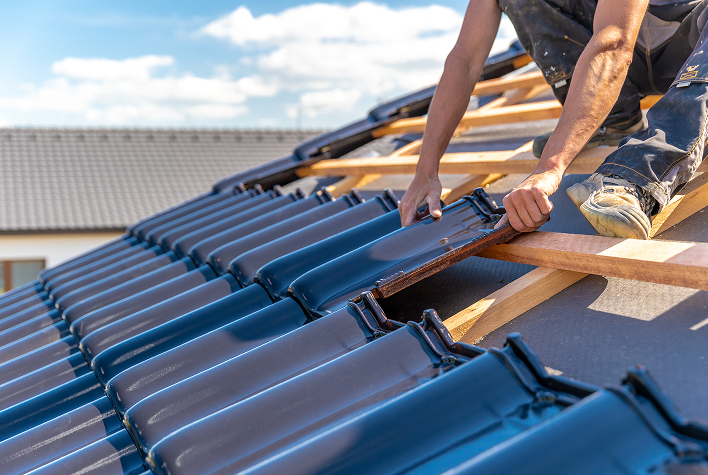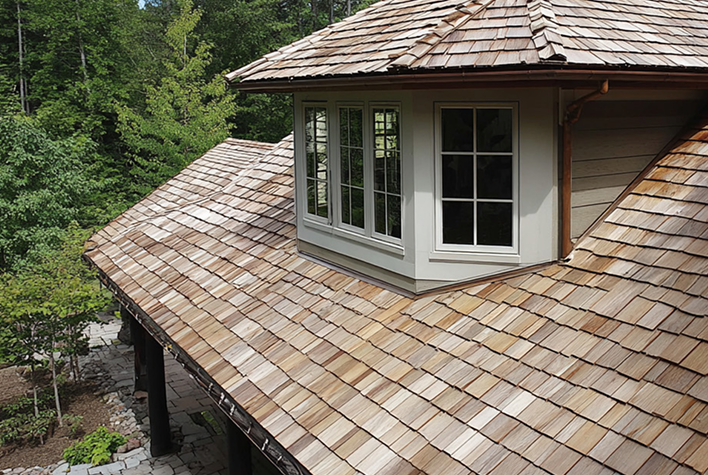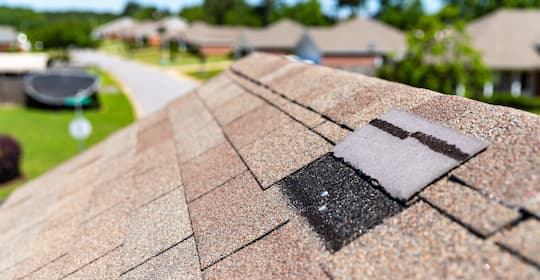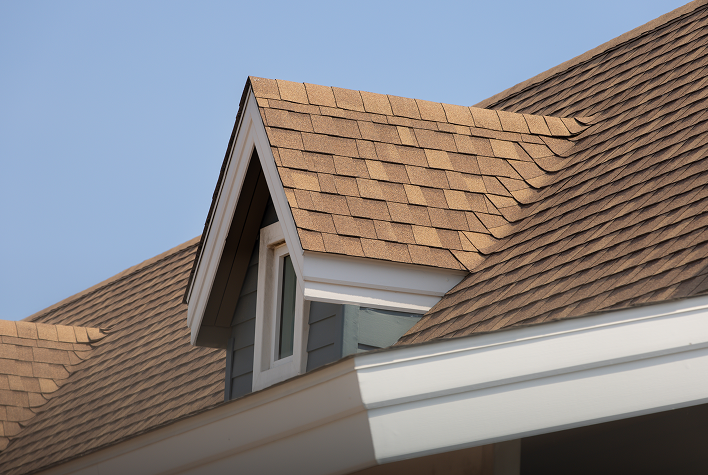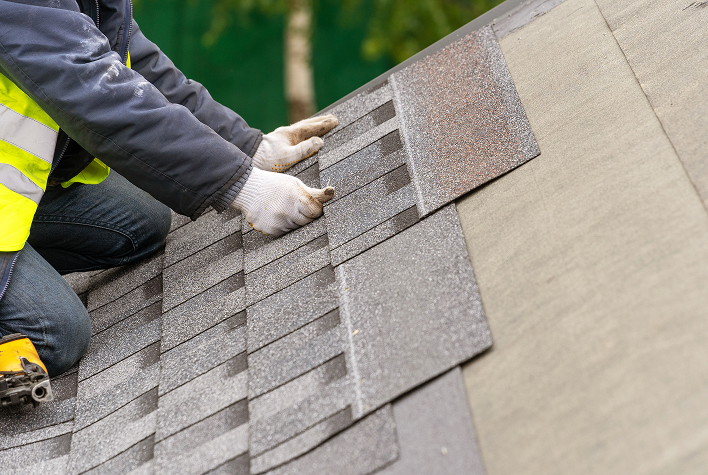
Key Points
- The national average cost to replace a roof is approximately $32,000, with most homeowners spending between $16,000 and $64,000.
- Depending on various factors, the total cost can range from $16,000 for smaller homes to $64,000 for larger or more complex roofs.
- The cost depends on your location, roof size, and other factors.
Are you planning to replace your roof? Whether you’re dealing with leaks, weather damage, or simply an aging roof, understanding the costs involved is crucial. This guide will walk you through the process, from pricing to key benefits, so you can save money and make the best decision for your home. Also, you’ll learn about the major cost factors affecting the final price. Plus, we’ll help you decide whether a roof replacement is necessary or if repairs will do the trick.
Repairing or Replacing Your Roof: What Is Better?
If your roof is showing signs of wear, you may be wondering whether a repair will suffice or if you need to replace a whole roof. The decision largely depends on the extent of the damage and the age of your roof.
If the damage is minor (e.g., a few missing shingles or small leaks), a repair may be a budget-friendly solution. It typically costs less, ranging from $300 to $1,500, depending on the severity and labor involved. This option can extend the life of your roof by several years, delaying the need for a full replacement. Also, it typically takes less time than a full replacement, causing minimal disruption to your daily life.
However, if your roof is nearing the end of its lifespan (20-30 years for asphalt shingles, 50+ years for metal roofs) or has widespread damage, replacing it may be the smarter investment. Roof replacement ensures long-term protection and energy efficiency. Plus, newer materials often come with better warranties and curbs. They can significantly improve your home’s insulation, potentially lowering energy bills. Moreover, a new roof can dramatically improve your home’s appearance and potentially increase its value.
When Is It Time for a New Roof?

Knowing when to replace the roof can help you avoid costly repairs in the future. Here are a few signs that indicate it’s time for a new roof:
Remember, these signs often appear gradually. Regular roof inspections, ideally twice a year, can help you catch problems early and make informed decisions about repair or replacement.
Major Cost Factors of Replacing a Roof in Your House
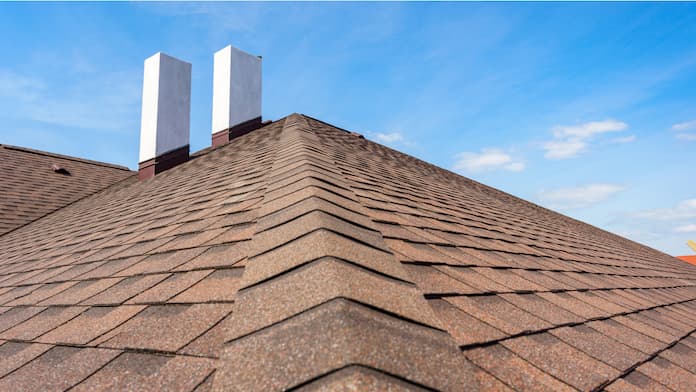
Understanding the factors that influence the cost of roof replacement can help you budget more effectively. Let’s look at the most important ones.
Roof Size
One of the most significant factors is the size of your roof. Roofers typically charge by the square footage, and larger roofs naturally require more materials and labor. In roofing, a square is 100 square feet. The cost per square can range from $300 to $1,000 or more, depending on your chosen material.
- Small roof (1,000-1,500 sq. ft.):$3,000 to $16,000
- Medium roof (1,500-2,500 sq. ft.):$16,000 to $32,000
- Large roof (2,500+ sq. ft.):$32,000 to $64,000+
Material Type
The type of roofing material you choose will significantly impact the overall cost to change a roof. Here’s a look at common roofing materials and their cost ranges.
| Roofing Material | Description | Price Range (Per Square) |
|---|---|---|
| Asphalt Shingles | The most popular and affordable option, with a lifespan of 20–30 years. Asphalt shingles are easy to install, lightweight, and come in various styles and colors. | $100–$400 |
| Metal Roofing | Available in aluminum, steel, copper, and zinc. Metal roofs are durable, energy-efficient, and can last 40–70 years, but come with a higher upfront cost. | $300–$1,000+ |
| Wood Shakes or Shingles | Provides a natural, rustic look. Made from cedar, redwood, or pine, wood shingles last 20–40 years but require more maintenance and are more susceptible to fire. | $250–$600 |
| Slate Roofing | Extremely durable and luxurious, slate roofs can last 75–100 years or more. They are heavy and expensive but offer a classic, elegant appearance. | $1,000–$3,000+ |
| Clay Tiles | Common in Mediterranean-style homes, clay tiles are highly durable and long-lasting (up to 100 years), but they are heavy and often require reinforced roofing structures. | $800–$2,500 |
| Concrete Tiles | Similar to clay tiles but more affordable. Concrete tiles are durable, energy-efficient, and have a lifespan of 50–60 years, though they can also be heavy. | $300–$1,000 |
| Synthetic Roofing | Made from rubber, plastic, or polymer, synthetic roofing mimics the look of more expensive materials like slate or wood but is lighter and more affordable. | $400–$800 |
| Solar Shingles | Combines roofing material with solar technology to produce energy. These are a more sustainable option but have a higher initial cost and moderate energy output. | $2,000+ |
Roof Pitch and Complexity
The slope or pitch of your roof is another critical factor. A steeper roof is more dangerous and challenging to work on, which often leads to higher labor costs. Roofs with multiple valleys, dormers, or complex shapes are also more time-consuming to replace, further increasing costs. For instance, replacing a roof with a steep pitch can be 10% to 20% more expensive compared to a simpler roof.
Removing Old Roofing
In most cases, the old roofing material will need to be torn off before installing a new roof. This process adds to the labor and disposal costs. The price for roof tear-off varies depending on the material being removed and the number of layers that need to be discarded. The more layers of old roofing, the higher the cost. On average, expect to pay between $1,000 and $3,000 for the removal of old roofing materials.
Roof Accessibility
The accessibility of your roof can also affect labor costs. If your home is located in a difficult-to-reach area or if the roof itself is hard to access (e.g., due to landscaping, fencing, or multi-story structures), the contractor may need additional equipment like cranes or scaffolding, which can increase the total cost.
Location and Regional Pricing
Where you live can influence the cost of replacing the roof. The prices depend on differences in labor rates, the cost of living, and local building codes. For instance, roof replacement in urban areas or regions with a high cost of living, such as coastal cities, tends to be more expensive. In contrast, rural areas typically have lower labor costs. Prices can vary by 5% to 15% depending on your location.
Permits and Inspections
Most projects require permits, and the costs of these permits can vary significantly depending on your location. Additionally, you may need to pay for inspections both before and after the job is done. Permits typically range from $300 to $1,000, but be sure to check with your local authorities for exact requirements in your area.
Roof Underlayment and Decking
When replacing a roof, it’s not just about the shingles or tiles. The underlayment (the protective layer beneath the outer roofing material) and decking (the wood structure of your roof) may also need to be repaired or replaced if they’re damaged. The cost of underlayment typically ranges from $0.50 to $1.50 per square foot, while decking replacement can cost $2 to $7 per square foot, depending on the extent of the damage.
Warranty and Insurance
Most roofing materials come with a manufacturer’s warranty that covers defects in the materials. Asphalt shingles often have a 20–30-year warranty, while metal, slate, and tile roofs can have warranties of 40 years or more. Additionally, roofing contractors may offer a workmanship warranty, typically lasting 5 to 10 years, that covers installation errors.
Homeowner’s insurance covers the cost of replacing the roof if it is damaged by a storm, wind, or fire. However, wear and tear due to age or lack of maintenance is usually not covered. Always check your policy to understand what’s included and whether your insurance covers replacement or repair.
Additional Features and Customization
If you have skylights, chimneys, or ventilation systems that need to be replaced or worked around, these features can add to the overall cost. For instance, installing a new skylight can add $1,500 to $2,500 to the total price. Similarly, flashing around chimneys or vents may need to be replaced, adding $200 to $500 per item.
Labor Costs
Labor costs account for a significant portion of the roof replacement expense. The labor cost to replace roof shingles or other materials depends on your location, the roofing company’s rates, and the complexity of the job. On average, labor costs range from $150 to $300 per square. However, if your roof is particularly steep, complex, or hard to access, the labor cost can rise significantly due to the extra time and safety precautions required.
Repair vs. Replace: Which Is More Cost-Effective?
The choice between repairing or replacing the roof depends on how much the roof is damaged and its age.
While repairs are typically less expensive, they may only be a temporary solution if your roof is nearing the end of its lifespan.
Minor repairs, such as fixing a leak or replacing a few damaged shingles, can cost between $150 and $1,500, depending on the complexity. Roof repairs are generally a cost-effective solution if the problem is localized, and the rest of the roof is in good condition. However, recurring repairs can add up over time, and if your roof is older or extensively damaged, replacing it might be a better long-term solution.
Replacing the entire roof is more expensive upfront but ensures that your home is fully protected for the next 20–50 years, depending on the material. If your roof is nearing the end of its lifespan, replacement is often more cost-effective in the long run compared to frequent repairs.
| Factor | Repair | Replacement |
|---|---|---|
| Cost | $150–$1,500 | $3,000–$30,000+ |
| Lifespan | Temporary fix. May need repeated repairs. | A new roof lasts 20–50+ years depending on the material. |
| When to Choose | Localized damage, relatively new roof. | Widespread damage or older roof nearing the end of its lifespan. |
How to Reduce Your Budget When Replacing a Roof
Although roof replacement requires a significant investment, there are ways to control and reduce costs. Here are some budget-friendly tips:
DIY vs Professional Installation
- Cost: Lower upfront expense, mainly because you save on labor. However, extra costs for materials, tools, permits, and mistakes may apply.
- Expertise: Requires technical roofing knowledge and experience. Lack of skills can result in costly errors.
- Time Commitment: Significant time investment. Projects may take longer and disrupt your routine.
- Quality of Work: Results depend on your skill level. Improper installation can lead to leaks, poor ventilation, and structural issues.
- Safety: Higher accident risk due to working at heights, handling tools, and dealing with heavy materials.
- Warranty: Limited or no labor warranty. Manufacturer warranties may be void if installed incorrectly.
- Tools & Equipment: You must purchase or rent specialized tools and safety equipment, which increases the total cost.
- Insurance & Liability: You are fully responsible for injuries and damages. Homeowner insurance may not cover DIY mistakes.
- Permits & Inspections: You must handle permits and ensure compliance with building codes.
- Long-Term Cost: Higher long-term risk from repairs or premature replacement if work is done incorrectly.
- Resale Value: Improper installation may reduce your home’s resale value.
- Cost: Higher upfront investment including labor, expertise, equipment, and insurance.
- Expertise: Performed by trained and certified professionals with installation experience.
- Time Commitment: Faster installation with minimal disruption to daily life.
- Quality of Work: Consistent workmanship that meets industry standards.
- Safety: Lower risk due to professional safety protocols and proper equipment.
- Warranty: Includes workmanship warranty (often 5–10 years) plus manufacturer warranties on materials.
- Tools & Equipment: All required equipment is provided and included in the service price.
- Insurance & Liability: Fully insured against damage or injury during the project.
- Permits & Inspections: Contractors handle permits and ensure compliance with local building codes.
- Long-Term Cost: More cost-effective over time thanks to durability and fewer repairs.
- Resale Value: Improves resale value — a professionally installed roof with warranty is a strong selling point.
For most homeowners, it’s safer and more efficient to hire a professional. To find a reliable contractor, start by asking friends, family, and neighbors for referrals. Next, ensure the contractor is licensed, insured, and bonded. Don’t forget to ask about warranties materials and labor.
Also, choose a contractor with a proven track record of successful roof installations.
Looking for a hassle-free way to connect with qualified roofing contractors in your area? Homebuddy.com is your choice! Simply tell us about your project, and we’ll match you with top-rated professionals who meet your specific needs.
What Should You Ask a Professional
Before hiring a contractor, it’s important to ask the right questions to ensure you’re making the best choice:
Conclusion
Replacing your roof is a significant investment, but it’s essential for protecting your home and increasing its value. By understanding the factors that affect the cost of roof replacement and exploring ways to save, you can make an informed decision.
Whether you’re facing immediate roof issues or planning a future replacement, take the time to research, get multiple quotes, and ask the right questions. Your roof is your home’s first line of defense against the elements—investing in its replacement is an investment in your peace of mind.
Frequently Asked Questions
How can I finance my roof replacement project?
Several financing options are available for roof replacements, including home equity loans, personal loans, and financing plans offered by some roofing contractors. Explore the different options and choose the one that best suits your financial situation.
What is the best season to replace a roof?
The best time to replace your roof is in the spring or fall when the weather is mild, and contractors have more availability, leading to better pricing.
What is a whole roof replacement?
It involves removing the existing roofing material down to the decking, inspecting and repairing any damage to the roof structure, and installing a new roofing system. It’s a more comprehensive and expensive option than a simple repair or roof-over.
What is the best roofing material for cold and hot climates?
Metal roofs, asphalt shingles, and slate are excellent options for cold climates as they are durable and resist snow and ice. In hot climates, clay tiles, metal, or reflective asphalt shingles are ideal as they reflect sunlight and help keep the home cooler. The right insulation and ventilation also play a crucial role in optimizing roof performance for both hot and cold environments.
What is the best roof type to increase home value?
A roof made of premium materials like slate, metal, or architectural asphalt shingles can significantly boost home value. These materials are durable, energy-efficient, and aesthetically pleasing, attracting potential buyers. A well-maintained, high-quality roof also improves curb appeal and helps ensure a better resale price.
How should you maintain your roof?
Regular roof maintenance should include bi-annual inspections to check for damaged or missing shingles, leaks, and wear around chimneys and vents. Keep gutters clean and free of debris to prevent water buildup and potential damage to your roofing system. Address any issues promptly, and consider having a professional roof inspection every 3–5 years to catch potential problems before they become major repairs.
